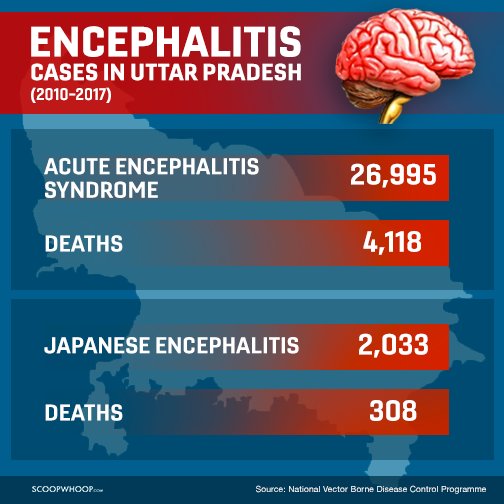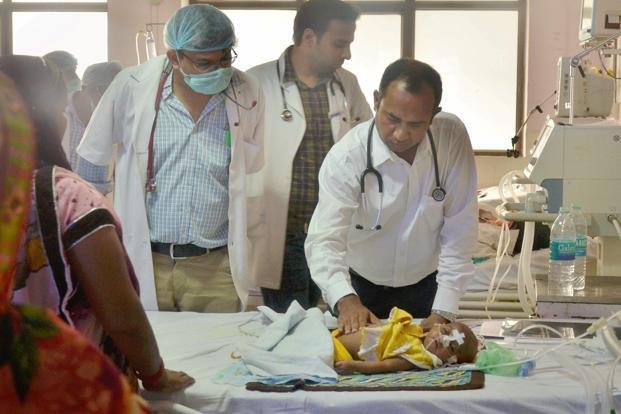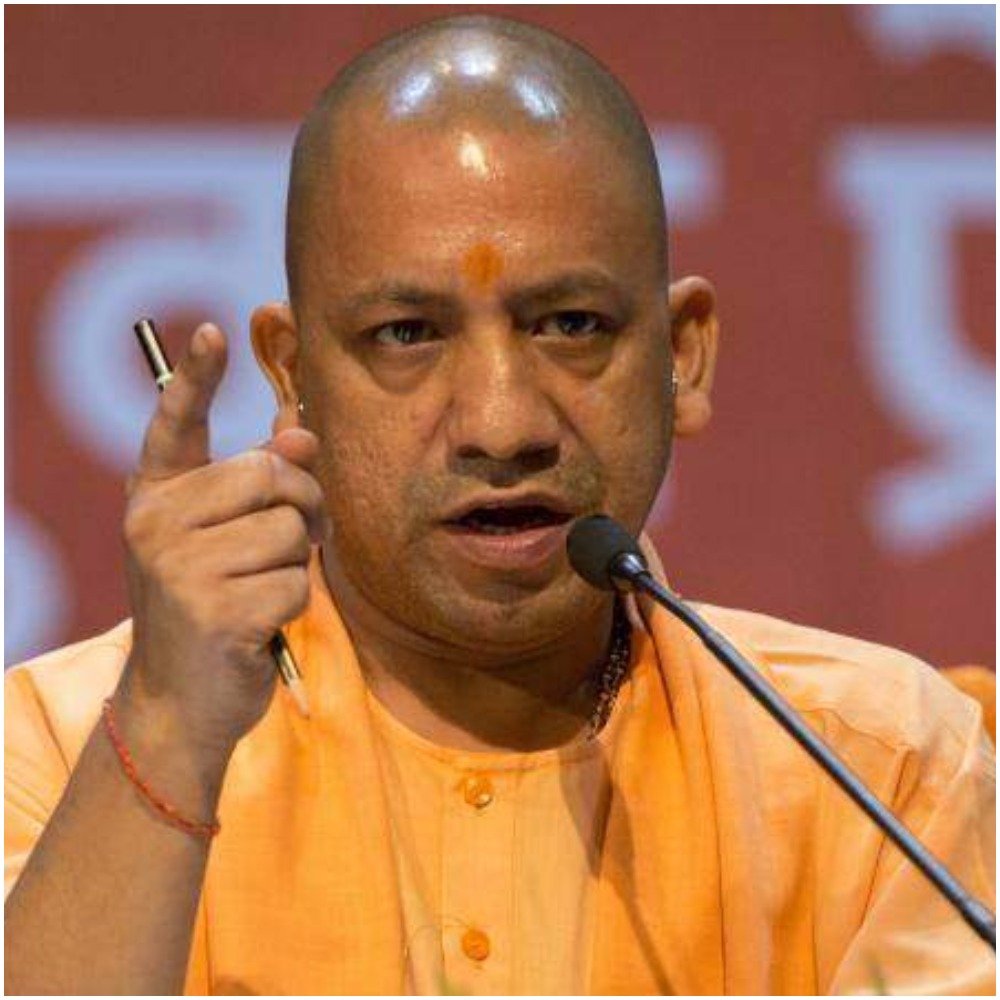India’s ongoing encounter with encephalitis brings forth questions about the affliction and the perennial deaths that this country witnesses with the onset of monsoons every year.
Now, the need to prioritise setting up a research facility dawned on the government only after over 60 children in Gorakhpur lost their lives within days. But, questions crop up on how the authorities have failed to deal with a disease that rears its ugly head like clockwork every passing year.
Encephalitis is a potentially life-threatening vector-borne disease that causes acute inflammation in the brain. Though the disease can be seen in people of all age groups, it has largely been known to affect children and the elderly. The usual cause is viral infections but it could also be caused by bacteria or fungi, making the diagnosis difficult.

According to a Firstpost report, Acute Encephalitis Syndrome (AES) is a term that covers all symptoms of brain inflammatory diseases while the most common pathogen in India is the Japanese Encephalitis (JE) virus.
A report by the Directorate of National Vector Borne Diseases Control Programme shows that 26,686 cases of encephalitis have been reported in Uttar Pradesh between 2010 and 2017 (look at the above graphic). Out of this, AES has been reported 24,668 times and JE has had 2,018 cases.
Where is it prevalent in India?
JE has been singled out as the primary cause of the disease in India. Since 1978, the disease has been reported in West Bengal, Uttar Pradesh, Assam, Bihar, Manipur, Andhra Pradesh, Goa, Pondicherry and Karnataka.
But there have been repeated outbreaks in Uttar Pradesh
The state has had multiple outbreaks with 3,919 cases of AES – the highest in the country – and 410 cases of JE reported in 2016 alone.
According to a National Center for Biotechnology Information report, there had been a major outbreak of viral encephalitis in Gorakhpur between July and November in 2005. The etiologic agent was confirmed to be Japanese Encephalitis, which claimed the lives of 1,000 children out of the 5,700 cases. This year, there have been 152 deaths due to AES and three deaths due to JE.

What has the government done so far?
Following the outbreak in 2005, a vaccination drive was initiated in May 2007 in Uttar Pradesh. Firstpost reported that large vaccination campaigns were also conducted across the country. JE vaccines were supposed to be given to infants under the Universal Immunization Programme.
However, loopholes emerged in 2015 when a team of Indian Council of Medical Research (ICMR) survey revealed that about 25% of the children in certain districts of the Gorakhpur division had not received the JE vaccine.

After the Yogi Adityanath government took charge, an awareness and public participation campaign was launched in May 2017 in 38 districts that are considered to be the worst-hit regions. The drive was supposed to cover over 88 lakh children, for which the Centre provided 1 crore vaccines. Though the vaccines were available for JE, no such vaccine was available for checking AES and better hygiene is the only way to ward it off.
Lack of measures against encephalitis
Reports claim that Baba Raghav Das (BRD) Medical College is the largest facility in Gorakhpur equipped to treat encephalitis. However, the main problem of the institute is that no one is aware of the real reason for the outbreak.
News18 reported that the college has pleaded with the government for the last 10 years for the need for a special unit to deal with encephalitis cases. Despite the fact that patients from neighbouring states and even countries like Nepal visit the facility for treatments, has hardly made the government feel responsible enough to allocate funds to battle the disease.
Reports claimed that even land required to set up special care units for encephalitis has not been provided, with no real measure to curb the incidents.
(Feature image source: PTI)

















